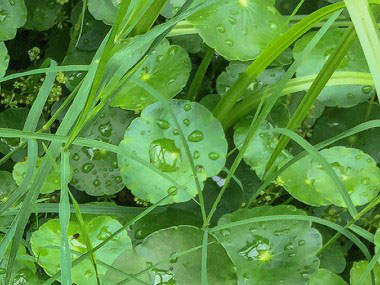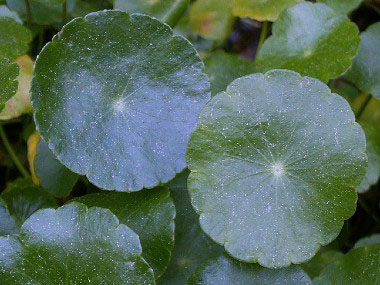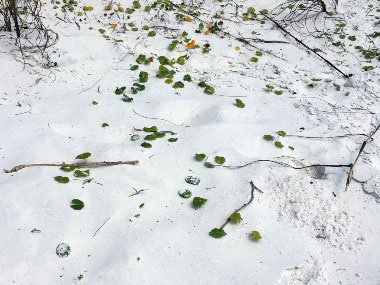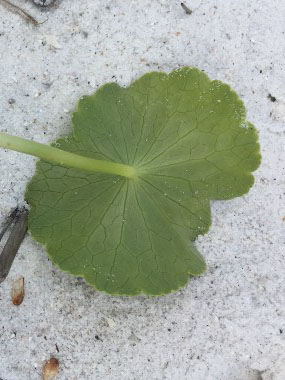





To support our efforts please browse our store (books with health benefits, etc.).
Pennywort is also referred to as being largeleaf pennywort or as dollarweed in some areas. It is a warm-season perennial plant often confused with Dichondra carolinensis and sometimes ground ivy. One way to distinguish the two is by looking at the placement of the leaf stem. Pennywort has a stem located in the center of the leaf, while dichondra’s stem is located at the edge. Pennywort is primarily in the U.S. south and southeast whereas ground ivy grows just about in every state and province. This native plant is in Apiaceae family. It is worth noting that pennywort is a common name given to several different plants around the world.
Distinguishing Features
Pennywort is a creeping plant that spreads out horizontally typically forming dense mats along marshes, ponds and wetlands. The leaf shape is quite distinctive and the central location of the stem makes it somewhat unique.
Flowers
The flower head is an umbel measuring 5 to 7cm (2 to 3") across. Individual flowers are tiny, with 5 greenish-to-white petals. The flowers can bloom anytime from April right through to September. Each flower has 5 petals and an inferior ovary.
 Fields
of Nutrition has medicinal benefits and vitamin/mineral content of Pennywort.
Fields
of Nutrition has medicinal benefits and vitamin/mineral content of Pennywort.
Leaves
The leaves are somewhat fleshy, round, with scalloped edges. They typically grow from 5 to 10cm (2 to 4") across and the stem is attached in the center of the leaf. The leaves can be smaller or larger depending on the habitat in which it is growing.
Height
Stems are 5 to 10cm (2 to 4") high.
Habitat
Pennywort is a creeping plant that spreads out horizontally forming dense mats along marshes, ponds and wetlands.
Edible Parts
Leaves, stems and flowers are edible. Many people juice the aerial parts of this plant and add it to smoothies. The leaves may also be eaten raw, dried, baked, or sautéed. When foraging for pennywort be sure that you are collecting specimens from a clean water source, and thoroughly wash leaves before consuming. Pennywort has little to no aroma and has a vague cucumber-like taste.
Other Name
Dollarweed.
Winter Survival Food Handbook

PDF Plant Magazines
Types of Wild Food
Geographic Zones Seasons
Disclaimer
EdibleWildFood.com is informational in nature. While we strive to be 100% accurate, it is solely up to the reader to ensure proper plant identification. Some wild plants are poisonous or can have serious adverse health effects.
We are not health professionals, medical doctors, nor are we nutritionists. It is up to the reader to verify nutritional information and health benefits with qualified professionals for all edible plants listed in this web site. Please click here for more information.
Why Edible Wild Food?
- Food costs are rising
- Free, wild food is readily abundant
- Wild food adds nutrition to your diet
- Wild food can help treat various medical conditions





